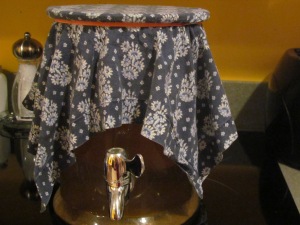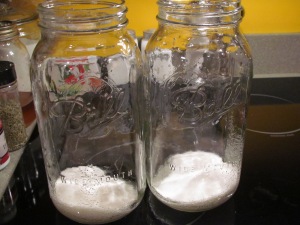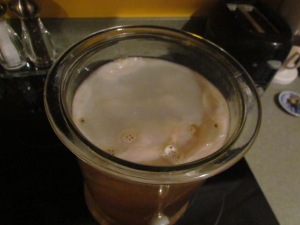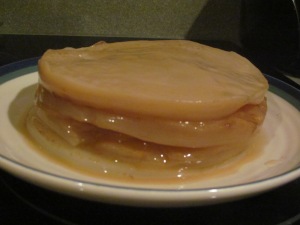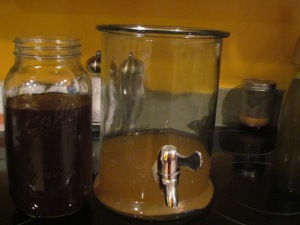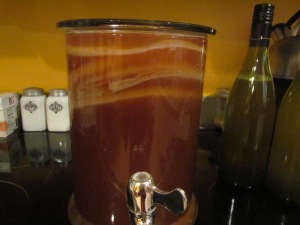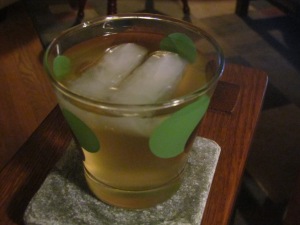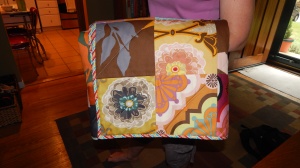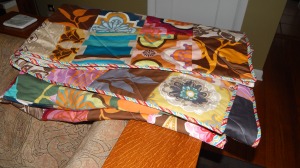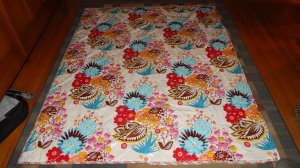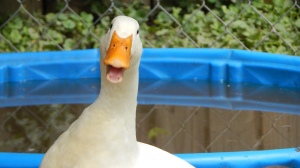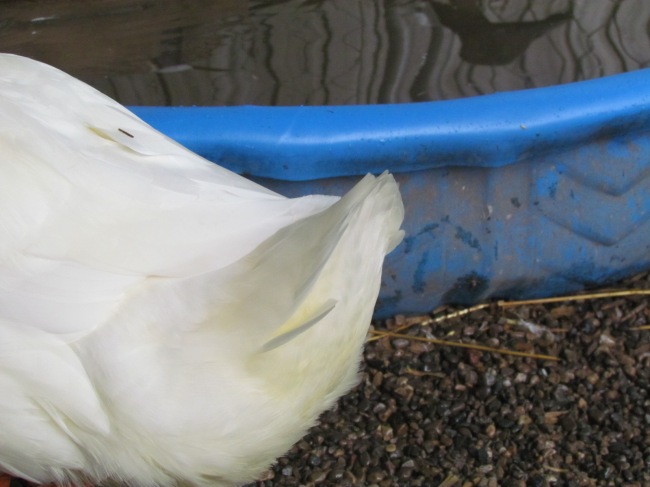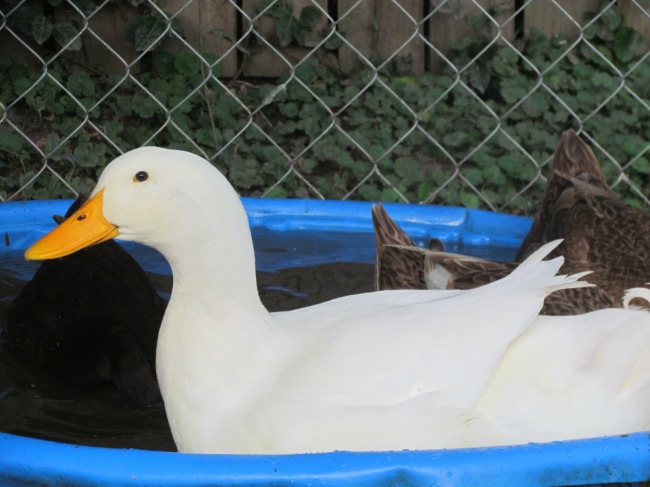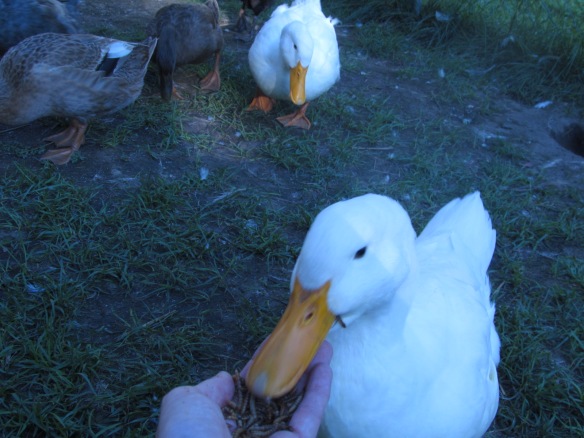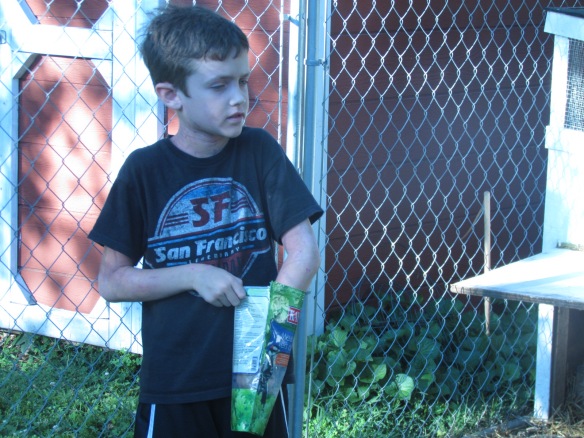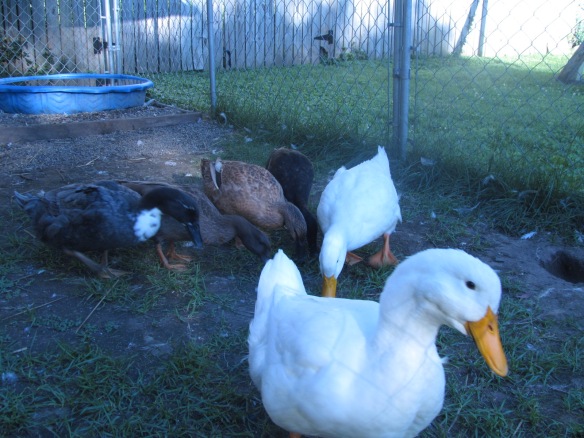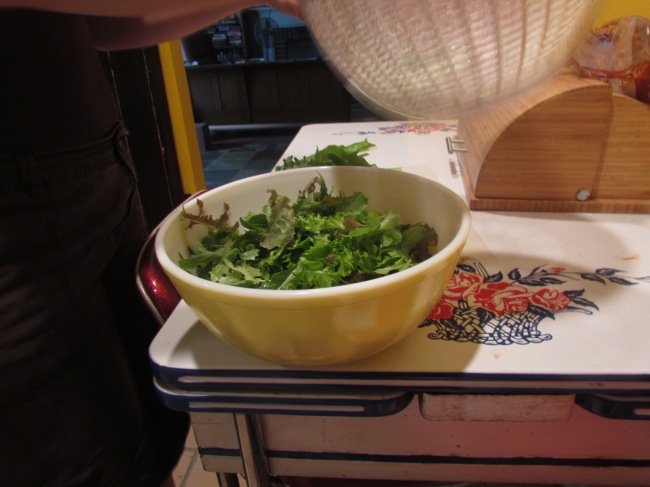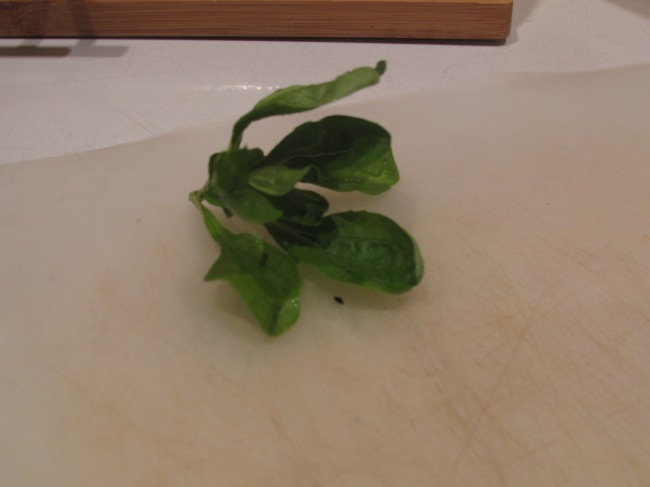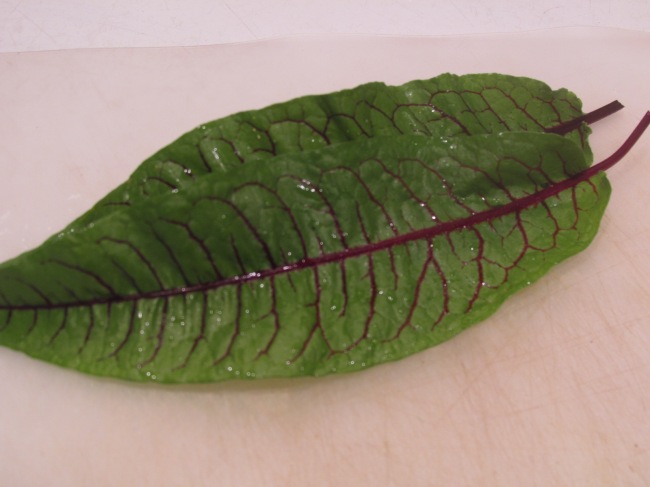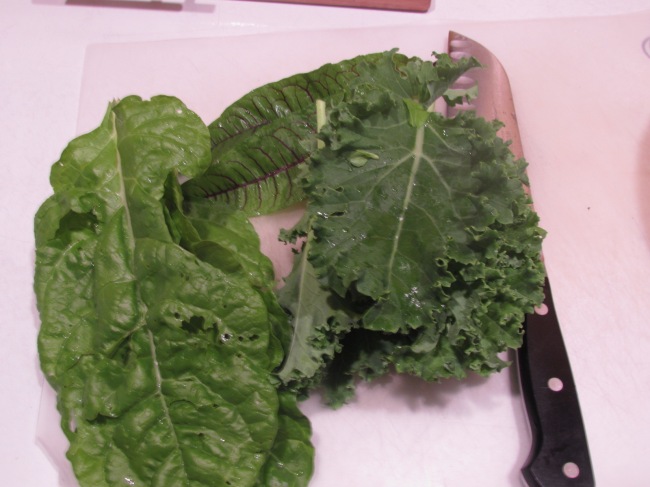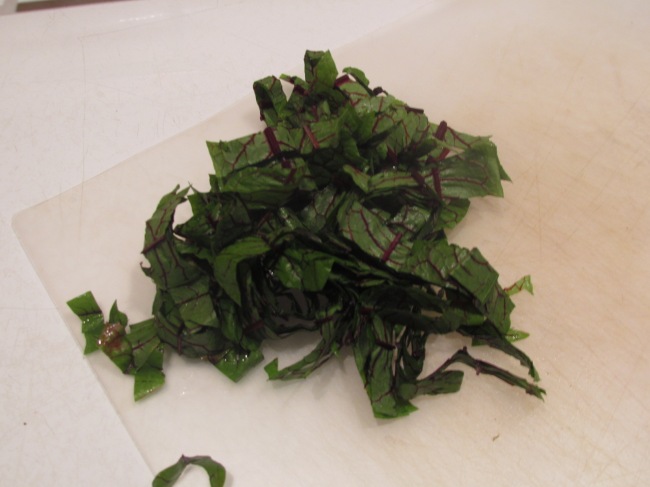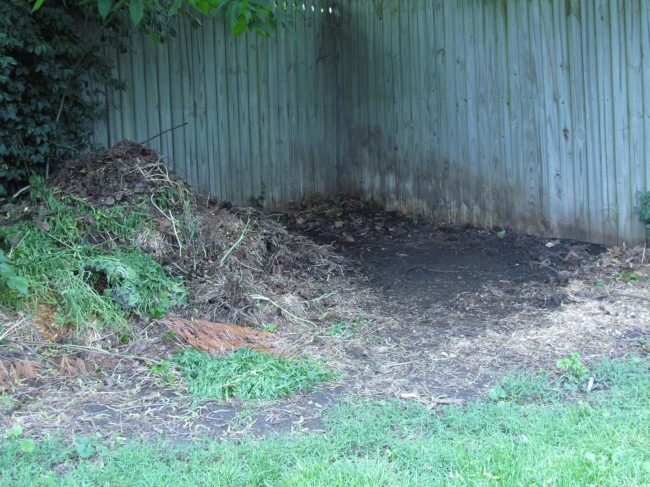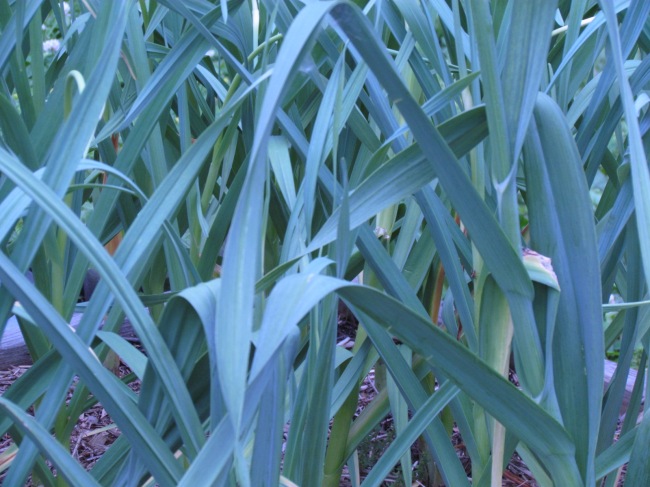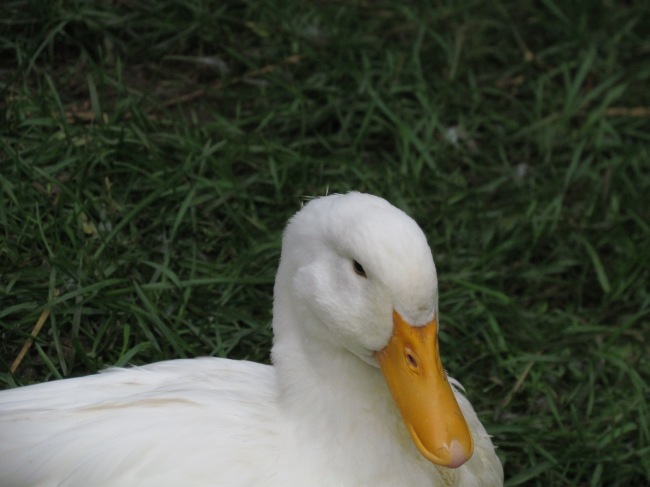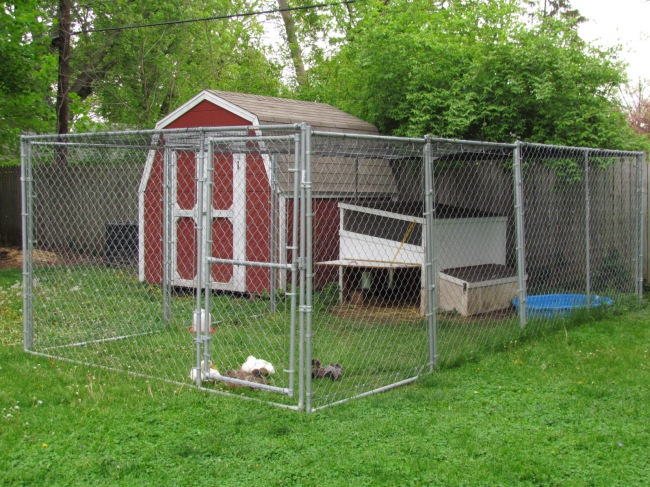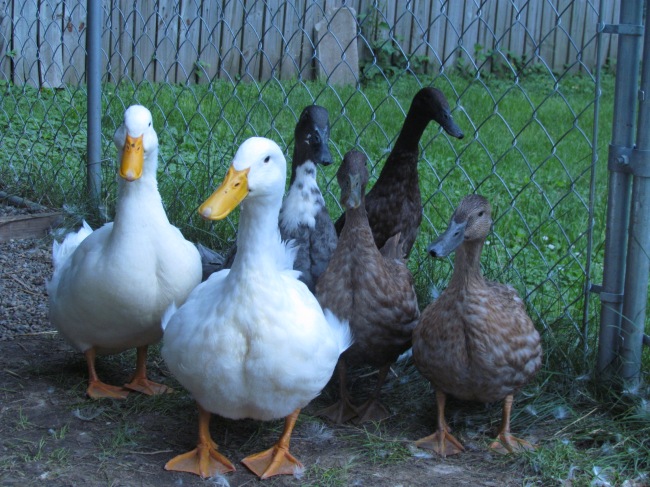
(Dixie, Joe, Sally, Millie, Cocoa, and Isabella.)
As you might remember, our first season of raising ducks ended rather tragically. Diamond, the lone survivor, is still living the high life at our friend Sharon’s house. She’s now joined by five other ducks, seven chickens, and three dogs in their urban farm Shangri La.
This winter we debated whether our weak hearts could risk getting broken again, but we ultimately decided it was just too much fun to have ducks, and we succumbed. Our half-dozen girls should be laying by around July or August. So, armed with the kids’ duck portraiture, I thought it was time to introduce the new girls.
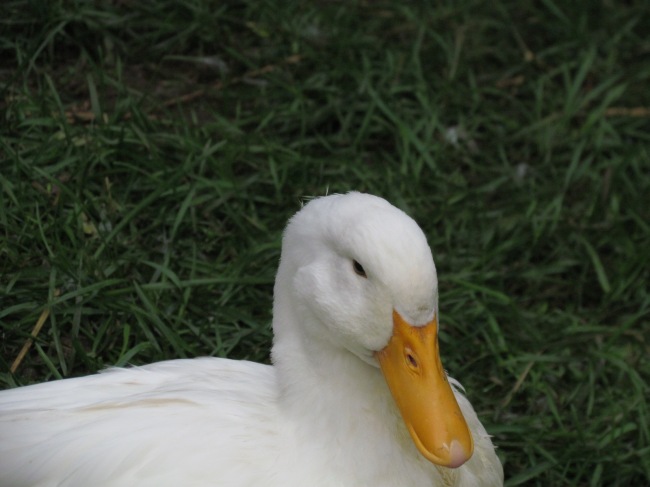
Joe
Joe is a Pekin and a few weeks older than the other girls. If it pleases the court, our hands were tied with Joe. We had ordered five new ducklings and innocently went to Tractor Supply to pick up their supplies. And it was Chick Days at Tractor Supply. That big bin of tiny yellow ducklings was too much for me and the three kids. We only wanted one duckling, knowing we had five more coming in a few weeks. Tractor Supply has a strict two-minimum rule on duck purchases, and the woman running the Chick Days area wasn’t going to bend it for me. But another customer was buying a raft of ducks and chickens at the time, and I quietly pulled her aside and asked whether she would take an extra duck if I bought two. So a clandestine exchange was made in the parking lot, and we came home with Joe. Tom named him because, unlike the sexed ducks we were getting from the hatchery, he (or she!) came from a straight run, meaning gender wasn’t determined. Tom figured we could call the duck Joseph or Jolene, depending on what ultimately emerged. We’ve continued to refer to him with male pronouns, but I’m starting to suspect Jolene is a more appropriate name.
I figured if Joe was a boy, we’d have fertilized eggs, which can last longer. If Joe was a girl, we’d just get more eggs. I didn’t want to risk getting two straight-run ducks, however, because having two males in a house of girls is just asking for trouble.
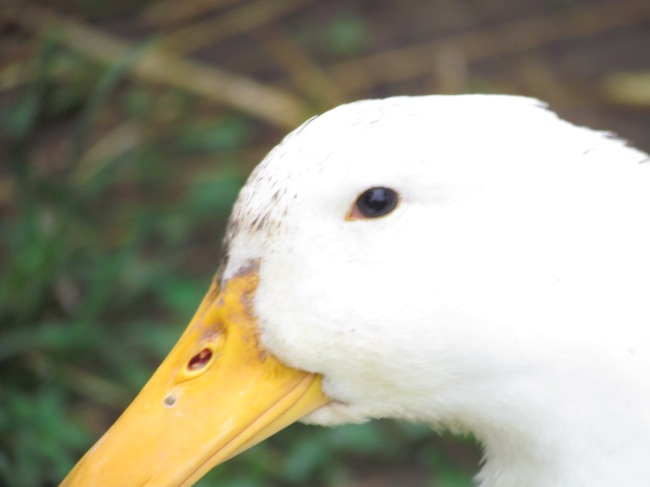
Dixie
Dixie is also a Pekin. These are big ducks that are often thought of as meat ducks, but we’re not going to eat Dixie. Or Joe. We got her because we loved my friend Sharon’s sweet Pekin named Sasha, Pekins are stunning with their big white bodies, and Pekins are great layers; it’s rare to have a breed that is both good for meat and good for eggs. They’re lousy mothers, however, so in nature have been known to just lay eggs all over the place, never gathering them up and sitting on them. That factoid from our duck book has made Max and me giggle more than once. I’m hoping Dixie will learn what her nesting box is for and that I won’t have to forage for her eggs. When I describe the Pekins, I get blank stares until I say, “You know, the Aflac duck.”
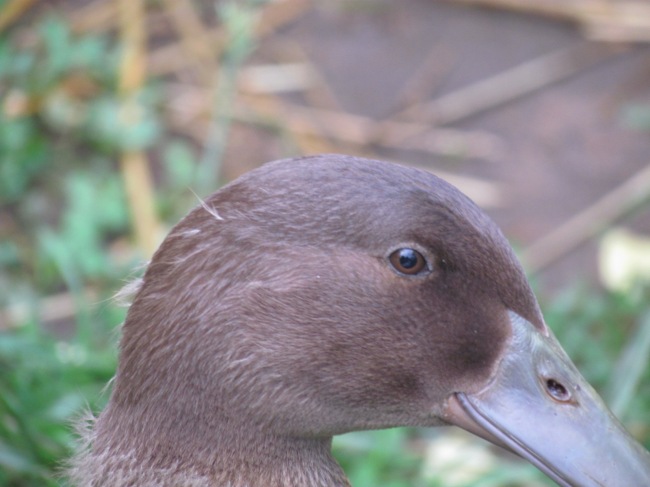
Isabella
Isabella is a Khaki Campbell, a lightweight duck that is one of the best laying breeds. Last year we had two Khaki Campbells:Khakadi and Anais. They were right as rain with the laying and had pleasant, albeit slightly skittish, personalities.

Millie
Millie is a Gold Star Hybrid, bred to be a prolific layer. If the stars align, Millie could lay more than 300 eggs this year, which is hard to believe coming from her little body. She looks a lot like a Khaki Campbell, but has some interesting dark feathers on her wing tips, and the feathers on her head have a beautiful nuanced color play. Pretty Millie.

Sally
Sally is a Blue Swedish. Last year we had two Blue Swedish ducks: Sophia and Diamond. Sophia died in the first predator attack, but Diamond is thriving in her new home. Blue Swedish are middle-weight and fairly laid-back ducks who, when they get past the flurry of new egg laying (when we were getting about an egg per day), lay about 100 to 150 eggs per year. We love Sally’s coloring: Her chest and face is speckled, unlike our previous Blue Swedish ducks who sported solid colors in these areas.
Cocoa
Cocoa is a camera-shy Chocolate Runner, a lightweight duck with a classic wine-bottle shape. Because of the way Runners hold their bodies, they don’t waddle so much as run. If you saw the movie Babe, you’ve seen a Runner in action. (Cocoa, however, doesn’t talk.) When Cocoa was a tiny duckling with tiny wings, she looked really comical next to her friends. While the other ducks sat lower to the ground and looked like ducklings, Cocoa stood upright, resembling a human with no arms. Cocoa is tiny, and it’s hard to believe she could ever squeeze out an egg, but Runners are also prolific layers, so we could see up to 300 eggs from her in a year.

We’ve changed some of our security measures with the girls (more about that later) to try to prevent what we experienced last year. That said, we know that having waddling creatures in our backyard, which is right by a river, is a risk. It’s a risk farmers take every day, and one that almost every backyard poultry raiser has had to deal with in one way or another. We know we can mitigate the risk, but we’ll never be able to totally eliminate it. Seeing them forage in the yard or splash in their pool or come running for mealworms (our new herd-the-ducks method), and anticipating the wonderful eggs they’ll provide in the fall, I’m glad we took the leap and brought these girls home.
Welcome, Girls!


